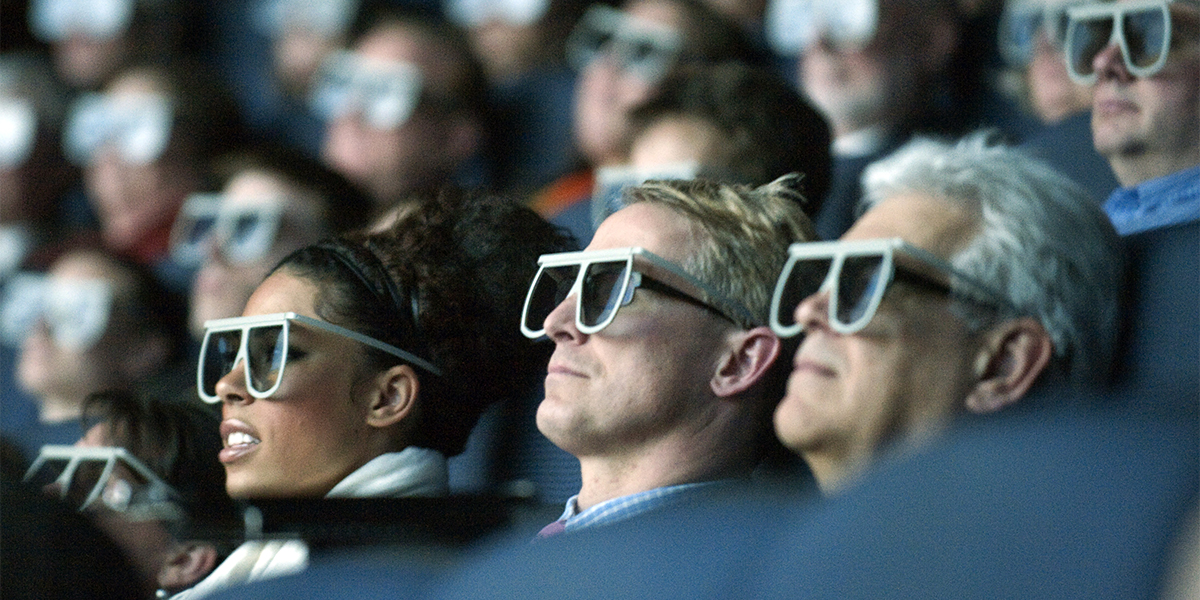From ‘Bwana Devil’ To ‘Avatar’: 3-D Film’s Evolution

Pixabay Images
In a 1952 edition of LIFE Magazine, there’s a famous photograph of a sold-out movie theater. It’s peculiar because everyone in the audience is wearing the exact same pair of paper glasses. That is because it is a photograph of the premiere of “Bwana Devil,” which many assume is the first 3-D feature film.
Movies made in 3-D have a much longer history, however, dating back to 1915 when film engineers and inventors started doing stereoscopy experiments. They were trying to make images from cameras look more like what they could see.
“We never liked that we got this flat image,” said Harper Cossar, film professor at Georgia State University and Emory University. “We always wanted to recover the depth. We could do good with height and width but it’s the depth we’ve always had a problem with.”
Cossar said that the real birth of 3-D should be 1922 when the first 3-D film was projected. It was a silent melodrama called “Power of Love.”
That film was shot using a camera that recorded on two strips of film in two different perspectives at the same time – a process called anaglyph. The audience would wear glasses with two different colored lenses, which matched up with the different strips of film.
Unfortunately, it was an absolute nightmare for projectionists.
“Three-D was never really a problem on the production end, it was a problem on the exhibition end,” Cossar explained. “Early on, we ran two strips of film and then the projectionist had to get those synchronized in the theater live … You get one or two frames off and everyone in the theater is having an epileptic fit because they are watching these two things that aren’t synchronized.”
Because 3-D used twice as much film, 3-D was also double the cost of a 2-D film.
In part because of these issues, 3-D movies didn’t catch on. The first projected film “Power of Love” only screened twice and was released in 2-D a couple years later.
In the 1930s and 40s, city dwellers went to the movies, 2-D movies, that is, multiple times a week, but then, in the 1950s, there was a rebirth of 3-D because of television.
Cossar illustrated the longer answer, however. “The baby boom, the G.I. Bill, urban flight, people are living in a different place from where theaters traditionally are, so what are we going to do as a novelty to lure them back?”
Three-D was just one in a bag full of tricks to create an immersive, sensorial experience at the movie theater, something a 12-inch TV at home couldn’t do.
Filmmakers experimented with tricks like widescreen, Cinerama (an early version of IMAX) and Smell-O-Vision, a tactic where smells were pumped into theaters through the sprinkler system.
Filmmaker William Castle’s film “The Tingler” came equipped with small vibrating devices in the theater seats.
The first full-length 3-D color film was “Bwana Devil,” the one whose premiere was photographed in 1952. The film, however, was not very good.
“There’s nothing interesting except they shot it in 3-D to take away from the fact it was an exploitation film,” Cossar said. “And people went and saw it because what, what we have to wear glasses, what in the world is happening? It’s nothing more than an amusement ride.”
Another well known 3-D film of the time was “Creature from Black Lagoon.”
It wasn’t just these sorts of adventure and horror films that were shot in 3-D. During the height of his filmmaking career, Alfred Hitchcock did a version of “Dial M For Murder” in 3-D, which Cossar said was a total departure from Hitchcock’s visually striking films.
“With stereoscopy, because we are trying to get all this 3-D stuff lined up, the camera can’t move much, or everyone will get motion sick,” Cossar said. “And so you take someone who is really, really a visual artist and loves to move the camera and do innovative things with the camera like Hitchcock, you watch ‘Dial M for Muder’ and you can’t believe this is a Hitchcock film.”
Three-D and other effects were trying to extend the film-watching experience, something quite passive, to recapture something of the depth and breadth of our natural world that we lose on camera. With difficult technology that still relied on synchronizing multiple elements, however, the sacrifices on screen didn’t make it worth continuing. Cossar said, “We’ve sold out the visual artistry to accommodate this novelty.”
The 3-D boom only lasted until 1955, and there was another small surge in the 1980s as theaters began to compete with home video. For example, the third film in the “Jaws” series featured 10 minutes of 3-D, as the technology was too expensive to do more than that.
In the 90s and early 2000s, 3-D had mostly been relegated to amusement park rides and educational dinosaur movies at natural history centers.
The 2009 film ‘Avatar’ by director James Cameron changed the course of 3-D history. “[Cameron] spent a lot of his own money getting this 3-D camera technology right,” Cossar said.
With a new type of 3-D camera, visual artistry did not have to be sacrificed for the technology like before. Along with the visual improvement, the 3-D experience has also become more comfortable. Audience members still have to use glasses to see the 3-D effects, but they are studier and easier to wear.
Three-D is still a novelty to attract people into theaters when they could just stream something on the web. Even with new technology, however, Cossar predicts that 3-D will never become the norm.
“There are certain people, certain genres, who make science fiction or fantasy films. I think 3-D is a great medium for that, but I don’t think it’s going to be a dominant, mainstream standard because most stories that we tell don’t demand it and it can seem forced.”
The number of 3-D feature films produced continues to grow with about 60 made this year worldwide, compared to 20 in 2009. The top grossing films are generally action, super hero, fantasy or science fiction franchises.





